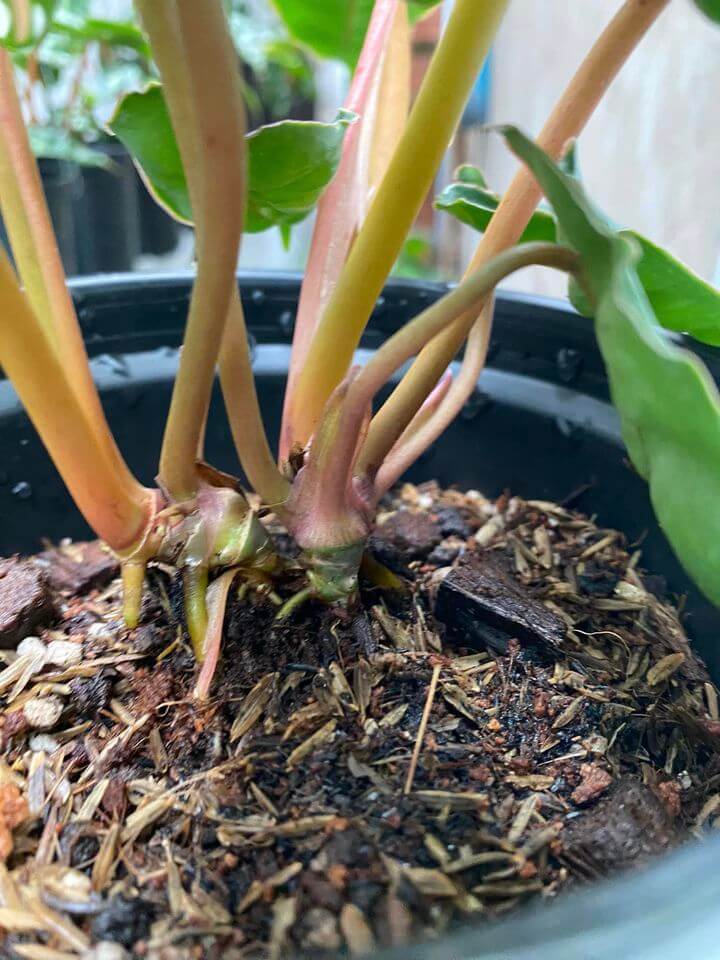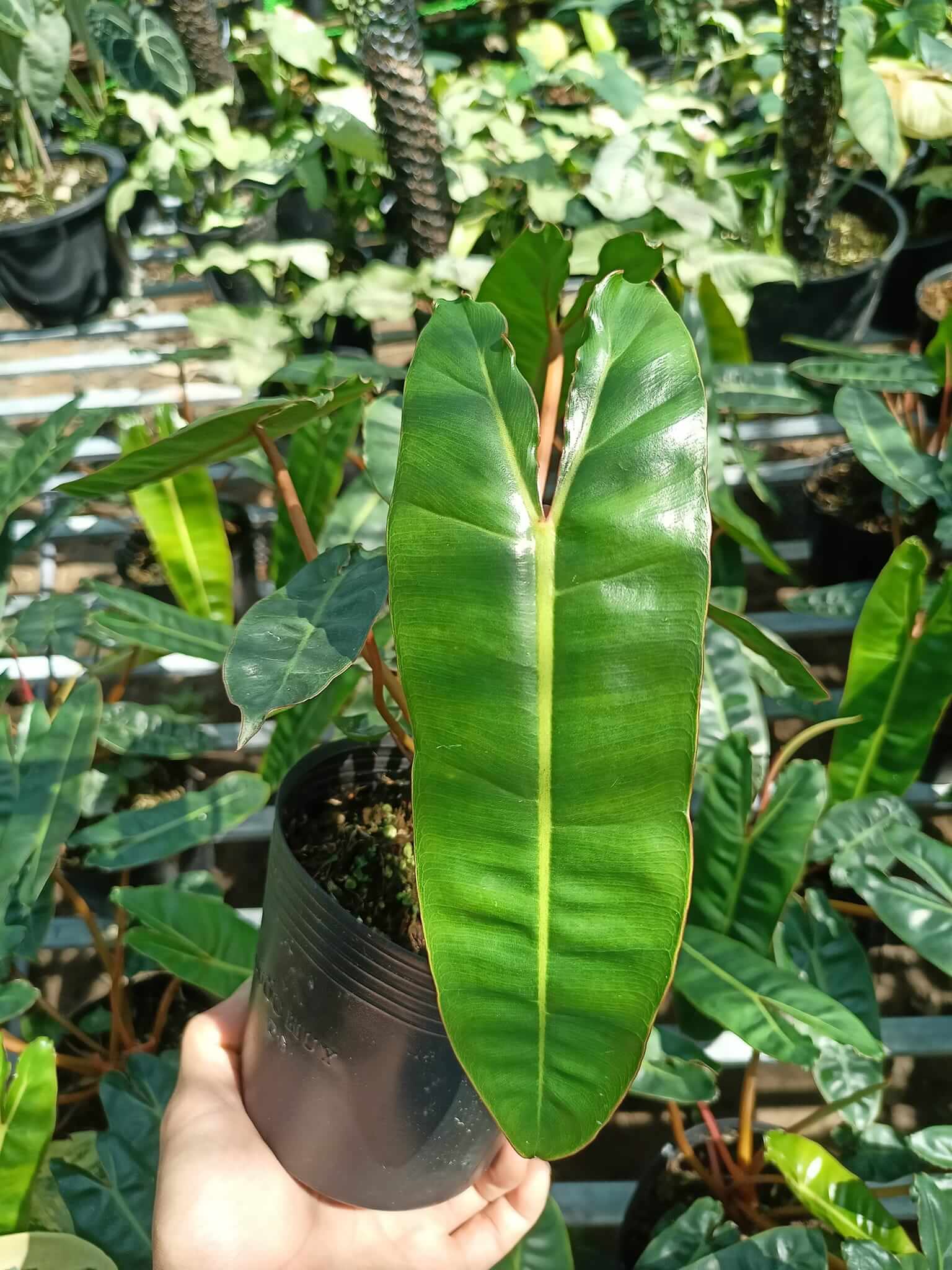Basic Information
Explore the enchanting appeal of the Philodendron Billietiae, an exquisite indoor plant that brings a touch of the tropics to any room! Its remarkable long, ribbed leaves are visually appealing and low-maintenance, making it an ideal option for plant lovers of all skill levels. Immerse yourself in a tropical atmosphere with this distinct plant!



Light
The Philodendron Billietiae is a plant that needs bright, indirect light to thrive. It’s best to place it near a window facing south or east but not directly in the path of the sun’s rays. Direct sunlight can damage the leaves, so using sheer curtains is recommended. If it receives less than five hours of indirect sunlight per day, the plant’s new leaves will be smaller, and its vines will grow leggy. Using LED grow lights as a supplement for 8-10 hours daily can help in such a situation. To encourage even growth and prevent lopsided development, rotating the plant weekly is important.
Water
This plant thrives in soil that is moist but not waterlogged. Before watering, check the top 1-2 inches of soil for dryness. Over-watering can cause root rot, so it’s important to ensure the soil has good drainage and to avoid letting the roots sit in standing water. Water the plant at its base rather than overhead to prevent fungal issues. Water the plant more frequently during the growing season, but reduce the frequency during winter.
Soil
Philodendron Billietiae and all other philodendrons prefer loose and nutrient-rich potting soil. You can use a mixture of tropical houseplant potting soil, perlite, and coco coir, which should be well-draining. Most pre-mixed soils are suitable, ensure that there is plenty of organic matter like coco-coir, peat moss, or shredded leaves. This combination helps to drain excess water while retaining necessary moisture. Avoid using soil that contains moisture-retaining crystals. Make sure that the pot has drainage holes to prevent waterlogging.
Temperature
The ideal temperature range for your tropical indoor plant is between 65-80°F (18-27°C), with slightly cooler temperatures at night. Avoid exposing your plant to temperatures below 55°F (13°C) as it cannot tolerate cold conditions. Doing so may stunt your plant’s growth, and prolonged exposure to cold temperatures may even prove fatal for this delicate plant.
Humidity
Maintaining high humidity levels between 70-90% is essential for this tropical plant to thrive and replicate its natural environment. You can boost humidity by using a DIY pebble tray, a humidifier, or by grouping plants together. Keeping the humidity level constant is crucial, especially during dry seasons or in air-conditioned rooms.
Fertilizer
To ensure the healthy growth of your Philodendron Billietiae, it is recommended to feed it regularly. During the growing season, use a complete liquid fertilizer diluted to ¼ strength every 4-6 weeks. However, avoid fertilizing in winter unless the plant is showing continuous growth. In that case, using a quarter-strength fertilizer or enriching the soil with worm castings or compost is best. Be careful not to over-fertilize as it may lead to salt build-up in the soil, which can harm the plant.
Growth Rate
Philodendron Billietiae can reach a height of 3 feet, with leaves growing 3-5 feet long. It grows at a moderate pace and produces large, vibrant leaves that are distinguishable by their unique appearance.
Pet Safety
This plant is toxic to humans and pets due to calcium oxalate crystals. Keep it out of reach of children and animals to avoid accidental ingestion.
Grow in Semi-Hydro
- Philodendrons, celebrated for their lush foliage and adaptability, thrive in semi-hydroponic systems such as LECA/Pon, thanks to their resilient root systems and preference for consistent moisture.
- Shifting a Philodendron to a semi-hydroponic setting works well using a Nutrient Stagnant Wicking (NSW) method, providing a stable and effective environment for growth.
- Within the LECA/Pon environment, Philodendron roots adapt swiftly, effectively managing any early challenges in adapting to the NSW system.
- For nourishing Philodendrons in semi-hydro systems, a nutrient solution with a concentration around 800-1000ppm is optimal.
- Philodendrons are versatile in adapting to a range of temperature and humidity levels, making them ideal for various indoor settings.
- Regular care involves keeping an eye on the water level in the reservoir and periodically flushing the system to ensure the Philodendron’s healthy and consistent growth.
- If your Philodendron is a climber, it’s a must to look at our Moss Pole guide to have a proper set-up.
Tips
- Prune dead leaves or to control growth, but avoid cutting more than 25% of the foliage at once.
- Repot every two years to replenish soil nutrients and encourage growth. Do it in spring, increasing pot size gradually.
- Watch for signs of root rot or other diseases, especially in overwatered plants.
- Regularly inspect and clean leaves to prevent and treat pest infestations.
- Rotate your plant regularly to make sure there is even growth on all sides and prevent it from leaning toward the source of light.
- Be sure not to expose this plant to cold drafts or temperatures below 50 degrees.
It’s important to observe your Philodendron Billietiae as each plant has unique needs. Adjust its care accordingly for optimal health and growth.
Happy planting! 🌱


